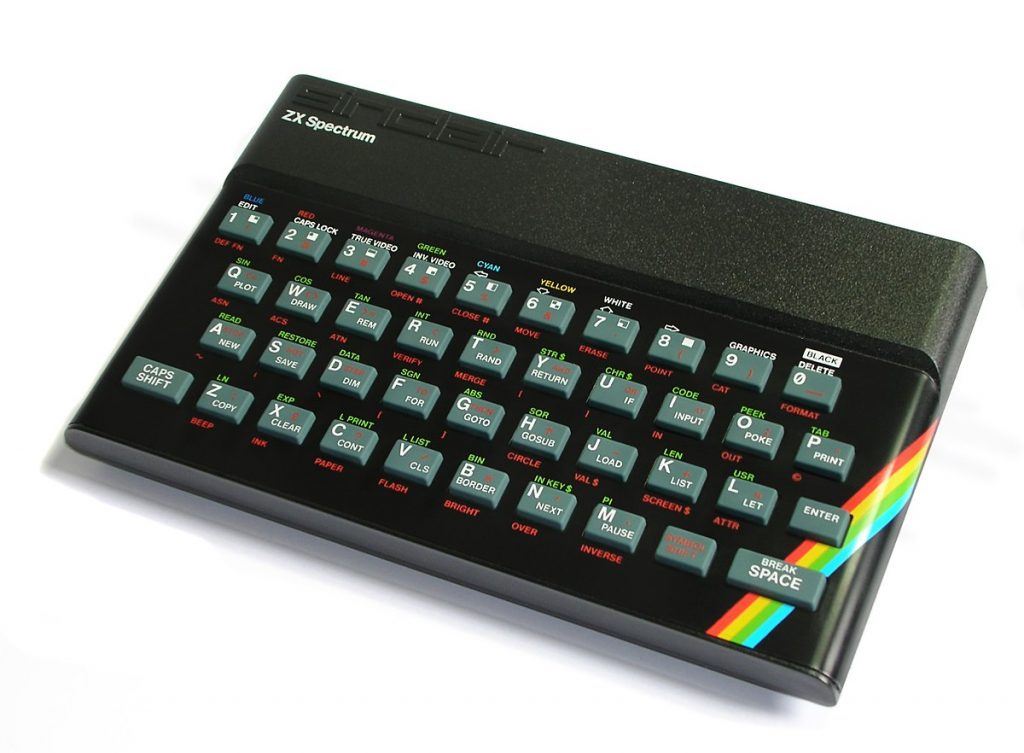The ZX Spectrum loading screen was a marvellous thing to behold. These wonderful pieces of digital art would entertain us, even as a static image, while we waited the five minutes plus for the game to screech its way into the limited memory of the Speccy.
More often than not they accompanied a really terrible game, but back then having the loading screen would be a large part of the games’ overall success. It was a part of the package, just like the box art, the obviously ‘these-images-weren’t-taken-on-a-Spectrum’ inlay screenshots, and the publisher’s claims that this was the ‘most graphically amazing game ever!’
As time marched on from the early Psion and Horizons tape days, game developers and digital artists would find more elaborate ways in which to introduce the game’s loading screen. Usually, the loading screen would be a part of the anti-piracy protection system, but to entertain us early gamers the developers saw fit to include animations, unique timers, different ways the screen loaded, and even in some cases, a mini-game.
We therefore have our personal ten great ZX Spectrum loading screens, that amazed us with their technical expertise and seemingly impossible to achieve code.
10 – Manic Miner
Matthew Smith’s 1983 Manic Miner was one of the first games we can recall seeing that featured a faux-animated loading screen that displayed the words Manic and Miner in different colours and positions on the screen.

It was a clever use of exchanging the background and foreground colours of the Spectrum’s video display, with the Bug Byte version being our favourite. It’s simple, but astonishingly effective.
9 – Splat!
Since we’re still quite early in the Spectrum’s life, Incentive Software’s Splat! was quite an impressive loader for its time.

This 1983 title had you running around a maze collecting bits of grass, if our memory serves correctly. It was a pretty simple game, but its loading screen was much better since it had an animated title and it colour-filled from the bottom up.
8 – Powerplay: The Game of the Gods
Powerplay was a 1988 release from Players Software, written by Andy Severn, Martin Severn, Colin Swinbourne and Mike Brown. It was basically a quiz game, but one that was quite interesting.

However, it was the Load-A-Game loading screen that really impressed up at the time. While there wasn’t a game as such on the loading screen, that was to follow with another Players’ title, Joe Blade, it did feature streaming text, and the publisher’s animated, pulsating icon in one corner. It was rather clever stuff.
7 – Bobby Bearing
Bobby Bearing was a clever Spindizzy, Marble Madness kind of game from The Edge back in 1986.

The loading screen is notable for a number of reasons: it was an excellent example of the Alkatraz Protection Systems, it loaded the screen art in a rotating fashion rather than the standard line by line and colour fill, it had a countdown counter in the bottom corner and, together with all that, there was a scrolling message detailing the background story of the game.
6 – Fairlight
Bo Jangeborg’s Fairlight, or Fairlight: A Prequel: The Light Revealed, was an astonishingly good and atmospheric isometric game from 1985.

Its loading screen though was one that captured the imagination and was the talk of the playground for some time. It used a Turbo Loader (probably an early Alkatraz system) with the screen art loading the borders first, followed by filling in the centre image, and displaying a countdown counter. Not to mention, it was also a fantastic bit of screen art.
5 – Trap Door
1986 saw the popular children’s TV program The Trap Door make its appearance on the Spectrum with Don Priestley’s large-sprite game.

While a standard loader was used, the loading screen, featuring the main characters as well as the publisher’s, Piranha, logo, managed to add an element of surprise with an animated main character, Berk.
Watch closely, and you’ll see Berk’s eyes move from side to side as well as occasionally opening and closing.
4 – Rigel’s Revenge
Mastertronic wasn’t just for those trigger-happy joystick, on-a-budget gamers, occasionally the company dabbled in the adventure genre too; even more so in the company’s early days with its Master Adventure label (the original idea behind Mastertronic was a genre-based release, with each genre having Master as the title).

Rigel’s Revenge was a 1987 text adventure, with a clever border-less animated loading screen that features the game’s title warping in and out as if on one of those pin boards. You also got different screens telling the back story of the game.
3 – Loco-Motion
Another Mastertronic title here, Loco-Motion was a puzzle game that had you moving blocks of train track around to keep the train moving. It was fun, and often infuriatingly difficult; but charming, nonetheless.

The loading screen though was exceptional. After the last colour fill the screen was jumble of mis-matched blocks, and during the remainder of the loading sequence the game rearranged the blocks to form the complete loading screen and title page. Quite remarkable, really.
2 – Technician Ted
Hewson Consultants Ltd had some cracking games under its belt, but it was this rather odd but compelling platformer that people still fondly recall.

Technican Ted was one of the first games we can remember that had a fully animated character loading screen, with multiple characters from the game moving horizontally across the screen as the game loaded. Pretty impressive stuff considering it was still quite early in the Spectrum’s life.
1 – Joe Blade 2
Using the Load-A-Game technique by Andy Severn, Players Software’s 1988 Joe Blade 2 had more than just animated characters or funny little countdown counters, it actually featured a tiny game of Pac-Man that you could actually play while the game loaded – using Q, A, O, and P to move around with.

Joe Blade 2 itself was a good game, but it was the loading screen that will forever be remembered by Spectrum gamers.
Load””
Loading screens may well have gone the way of the Dodo, but that doesn’t mean they can’t still be enjoyed either through the original hardware or via an emulator. The choice is yours, so sit back, dust off the tapes and get loading. Let us know below what your favourite retro loading screen was.


